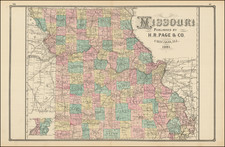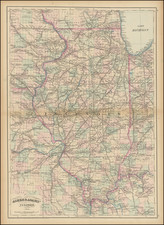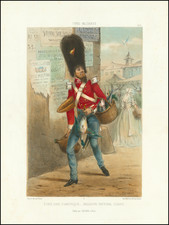From Pittsburgh to St. Louis by Water
Rare map of the Ohio River, from Pittsburg to the confluence of the Mississippi River, with an inset showing the course of the Mississippi from the Missouri River to the Ohio River.
The map provides a remarkable look at the watercourse which would eventually take earlier travelers to New Orleans and the Gulf of Mexico, 4 years before the publication of Lewis & Clark's map and official report.
The map was issued with Christian Schultz's Travels on an Inland Voyage Through the States of New- York, Pennsylvania, Virginia, Ohio, Kentucky and Tennessee, and through the territories of Indiana, Louisiana, Mississippi, and New-Orleans: performed in the years 1807 and 1808, including a tour of nearly six thousand miles. . ., published in 1810. The book is one of the earliest works to give a detailed account of travel and the actual risks and dangers encountered in the Western Country. Schultz crossed upstate New York and western Pennsylvania, then went down the Ohio and Mississippi rivers to New Orleans, travelling inland along the way.
In 1780 during the Revolutionary War, Brigadier General George Rogers Clark established Fort Jefferson on a hill overlooking the Mississippi River, at the confluence of the Ohio River. The fort was intended to protect what was then the western boundary of the infant United States, from raids by the British Army and Native Americans. It was abandoned in 1781 after a siege by the Chickasaw.
After Clark's victories at Kaskaskia, Cahokia and Vincennes, America controlled the Illinois Country. Soon after these victories, Clark's reputation grew and he became famous. He returned to his base fort on Corn Island, at the Falls of the Ohio, near present-day Louisville, Kentucky. There he received orders from Jefferson to begin making plans to build a new fort at the confluence of the Ohio and Mississippi Rivers.
Clark chose a spot five miles below the mouth of the Ohio River on Chickasaw Indian land, near present-day Wickliffe, Kentucky, for the new Fort Jefferson. The site was 200 feet above the river in Kentucky Territory and offered a commanding view of both rivers. Clark's plan was to keep at least 200 soldiers at Fort Jefferson and another 100 settlers would receive a grant of 400 acres of land around the fort in exchange for growing the food necessary to sustain it. It would be the base where American Regulars would begin their missions against the British Western Army.













![(Cleveland Beer Drinkers) [Photograph of Zwiebel Brigade Drinking Beer in Cleveland]](https://storage.googleapis.com/raremaps/img/small/96294.jpg)
